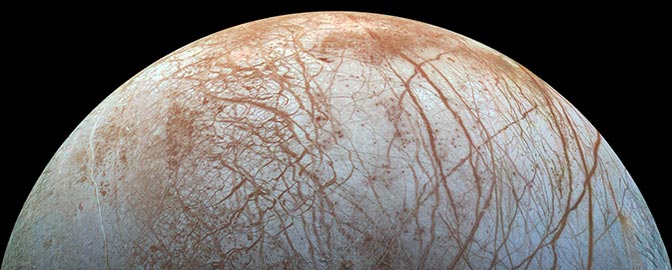Queqiao-2: China’s bridge for lunar exploration
Highlights:
- Queqiao-2 relays communications to Earth to support lunar far side and south pole missions
- The spacecraft also carries three science payloads for studying near-Earth space, as well as a VLBI experiment
China has launched a new Moon relay satellite to enable its next set of ambitious lunar exploration missions.
Queqiao-2 (鹊桥二号 or “Magpie Bridge-2”) lifted off on a Long March 8 rocket from China’s Wenchang spaceport on March 20 (UTC). Since then, it has supported missions targeting the Moon’s far side and its south pole by acting as a communications relay.
Queqiao means "magpie bridge,” a name taken from Chinese mythology. It references the story of the cowherd and the weaver girl, who are reunited once a year by a flock of magpies that create a bridge across the Milky Way. In a similar fashion, Queqiao-2 will act as a bridge to inaccessible areas on the Moon.
Why do we need Queqiao-2?
Queqiao-2 will circumvent communications challenges that come with exploring the lunar far side and south pole. Queqiao-2 has a mass of 1,200 kilograms (2,645 pounds) and carries a 4.2-meter-diameter (13.8-foot) parabolic antenna, one of the largest sent beyond Earth orbit. Galileo's high-gain antenna was larger, at five meters, but failed to fully deploy. Designed to operate for at least eight years, Queqiao-2 is intended to support a number of missions.
The mission's first task was supporting the Chang’e-6 (嫦娥六号) lunar far side sample return mission. Chang’e-6 launch on May 3, 2024 and successfully brought back samples from the Moon's far side on June 25, 2024.
As the far side of the Moon never faces Earth due to tidal locking, communications between Earth and Chang’e-6 needed to be bounced off an intermediary spacecraft. The effort is worth it, as material from the lunar far side promises insights into why the near and far sides of the Moon differ, as well as the history of the Moon, Earth, and wider Solar System.

How does Queqiao-2 operate?
To play its role, Queqiao-2 was inserted into a specialized 24-hour-period elliptical "frozen orbit" that allowed it to maintain a line of sight with both Earth ground stations and the Chang'e-6 mission in the Apollo crater for long periods of time.
This orbit is different from that of Queqiao-2’s predecessor, Queqiao, launched in 2018. That spacecraft facilitated the first-ever soft landing on the lunar far side from a halo orbit around Earth-Moon Lagrange point 2, around 65,000 kilometers or 40,000 miles beyond the Moon. This provided the support for the Chang’e-4 lander and rover mission.
The high stability of Queqiao-2’s orbit demands minimal fuel for maintenance, meaning a longer lifetime, allowing it to support further missions: Chang’e-7 (2026) and Chang’e-8 (2028). These will attempt to land near the lunar south pole with objectives including seeking water and testing in-situ resource utilization techniques, such as making bricks from lunar regolith. Queqiao-2 will switch to a 12-hour period orbit to better support these later south polar missions.
Queqiao-2 also carries three science payloads. These will play a part in the overall science goals of the multi-spacecraft Chang’e-7 mission. The Energetic Neutral Atom Imager for Earth’s magnetotail imaging (GENA) and the Extreme Ultraviolet Camera for Earth’s plasmasphere observation (EUC) will study Earth's magnetotail and plasmasphere, and how the solar wind interacts with the Earth's magnetosphere and the ionosphere.
A Moon-Earth very-long-baseline interferometry (VLBI) measurement and observation experiment (LOVEX) is also included, designed to improve the accuracy of determining the orbits of spacecraft in deep space. It creates a 400,000-kilometer (250,000-mile) baseline between Queqiao-2 and radio telescopes on Earth. The experiment also carries out radio astronomical observations and tests capabilities for astrophysics and astrometry, making precise measurements of stars' locations in the sky.
The mission also serves as a platform to test possible future lunar infrastructure. The launch sent experimental CubeSats named Tiandu-1 and Tiandu-2 to the Moon. The satellites were developed by China’s Deep Space Exploration Laboratory and will test lunar communications and navigation payloads. The pair are flying in formation as pathfinders for a planned Queqiao lunar satellite constellation that will provide services for future robotic and crewed missions to the Moon, including the China-led International Lunar Research Station (ILRS).
The 61-kilogram (134-pound) Tiandu-1 carries a laser retroreflector and a Ka dual-band integrated communication payload. The smaller, 15-kilogram (33-pound) Tiandu-2 carries a communications instrument. NASA and the European Space Agency are likewise looking to develop their own networks of communications and navigation satellites to support the Artemis program. China’s wider Queqiao concept could also be expanded to various Lagrange points, Venus, and Mars to facilitate deep space communication.


 Explore Worlds
Explore Worlds Find Life
Find Life Defend Earth
Defend Earth

